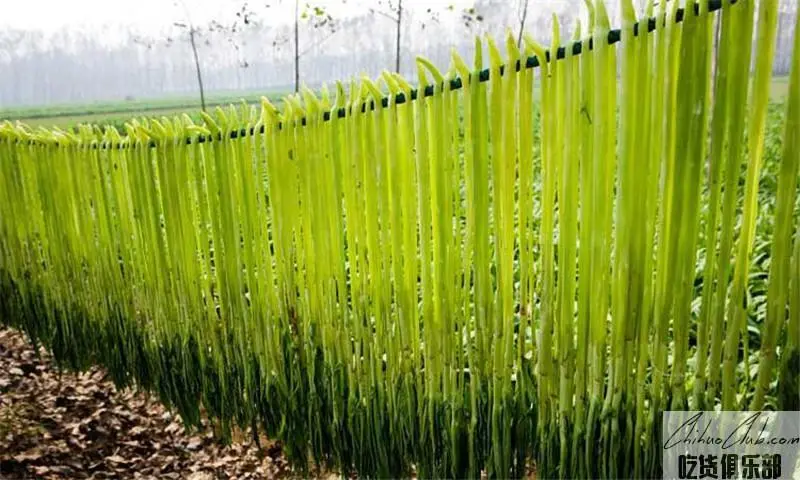
Pizhou moss
-
Update date::
-
Date of protection::
-
Protected range:The production area of Ganzhou Moss is the administrative area under the jurisdiction of Zhangzhou City, Jiangsu Province.
-
Related origin:jiangsu xuzhoushi pizhoushi pizhoushi-baluzhen pizhoushi-bayijizhen pizhoushi-chahezhen pizhoushi-chefushanzhen pizhoushi-chenlouzhen pizhoushi-daixujiedao pizhoushi-daizhuangzhen pizhoushi-donghujiedao pizhoushi-gangshangzhen pizhoushi-guanhuzhen pizhoushi-jiangsupizhoujingjikaifaqu pizhoushi-nianzhuangzhen pizhoushi-paochejiedao pizhoushi-pichengnongchang pizhoushi-pichengzhen pizhoushi-sihuzhen pizhoushi-suyangshanzhen pizhoushi-tiefuzhen pizhoushi-tushanzhen pizhoushi-xinglouzhen pizhoushi-xinhezhen pizhoushi-yanzibuzhen pizhoushi-yitangzhen pizhoushi-yunhejiedao pizhoushi-zhanchengzhen pizhoushi-zhanglounongchang pizhoushi-zhaodunzhen pizhoushi-zouzhuangzhen
-
Category:
The color of the dried moss in Ganzhou is green and green, the shape is slender, the structure is dense, the meat is thick and the texture is crisp and tender.
The main producing area of Ganzhou Moss is located in the south of Bozhou City. The boundary is between Huanghuai and Huaihe. It is a semi-humid warm temperate monsoon climate zone with four distinct seasons and sufficient sunshine. The annual average temperature is 13.9 degrees Celsius, the accumulated annual accumulated temperature is 5324.2 °C, and the annual average sunshine is 2350. Hours, the thermal energy resources are rich; the soil type is yellow fluvo-aquic soil, the soil is deep, and the organic matter content is abundant; the surface water system belongs to the Huaihe River Basin, the 沂, 沭, 泗 water system is rich in water resources, the groundwater is mostly fertilizer, fresh water, cadmium, mercury and other harmful substances. Extremely low, it creates unique conditions for the excellent quality of Cangzhou moss. History and culture The planting of the moss in Ganzhou is seen in Qin, which has been more than 2,200 years. According to the records of "Zhangzhou Zhi", in 218 BC, Zhang Liang was not in the Qin Shihuang, and escaped from the Yushu Bridge in Huangzhou. When he met the "Tianshu", the Taigong real person saw Zhang Liang muscle yellow face thin, let his raw food moss, Zhang After a good meal, the face is full of radiance and ruddy, becoming a white-faced scholar. After Zhang Liang was a military officer of the Western Han Dynasty, he still did not forget the delicious taste of the moss. Therefore, the local official ordered the rot to tribute to the tribute of the Han dynasty Liu Bang. Liu Bang liked it after eating, and gave the name of Ganzhou Moss as “tribute dish”. Another said that during the Qing Emperor Qianlong, the moss was used as a tribute to enter the palace, so it was called "tribute dish." Moreover, when Emperor Qianlong was in the south of the Yangtze River, he had to taste the dishes made with the dried moss. Brand Construction In the 1980s, Cangzhou Moss was listed as one of Jiangsu's top ten famous specialty products by Jiangsu Province for its unique quality and rich nutritional value. It was also recorded in the "Classic Jiangsu Famous Product Record" and was included in the China Special Product Network. For the local famous and special products in China; in 2007, Luzhou City was listed in the first batch of representative works of intangible cultural heritage in Ganzhou by the government of Ganzhou City. In recent years, Cangzhou City has continuously strengthened the construction of the circulation network and processing enterprises, and improved the industrialization level of the moss. It has developed more than 10 varieties of dehydrated moss, dried water moss, red oil moss, fresh-keeping moss, and gift box. Among them, Xuzhou Jingbei Food Co., Ltd.'s "Spicy Moss" was awarded as Xuzhou Famous Brand Product. The brand awareness and influence of “Cangzhou Mogan” has been significantly improved, and its competitiveness in domestic and international markets has been continuously enhanced. The products are exported to more than 20 countries and regions such as Japan, the United States, South Korea, Australia and Hong Kong.
Technical requirements for quality of Ganzhou moss dry 1. Variety Processing of lettuce varieties: Qing is not old. 2. Site conditions The soil type is yellow fluvo-aquic soil, the texture is medium loam, the organic matter content is ≥2.0%, and the soil pH is 7.5 to 8.0. Third, cultivation management Seedling and transplanting: sowing twice a year, autumn moss is seeded in mid-August, transplanted in mid-September; spring moss is seeded in early October, and transplanted in early November. 2. 3. Fertilization: The application rate of organic fertilizer in base fertilizer is ≥30 tons/ha. 4. Field management: After planting and living, cultivating loose soil, the seedlings should not exceed one week. After seedlings, according to soil fertility, sensation, appropriate amount of fertilizer, watering. 5. Environmental and safety requirements: The use of pesticides, fertilizers, etc. must comply with relevant national regulations and must not pollute the environment. 4. Harvesting When the top and bottom leaves of the moss plant are flush, they are harvested. The harvesting period of autumn moss is from late October to late November; the harvesting period of spring moss is from mid-April to early May. V. Processing and storage Planing: Remove the leaves and roots from the harvested fresh food within two days after harvesting, and cut the base into a conical shape and peel it. 2. 3. Drying: Naturally hanging and drying for 2 to 3 days, the meat can be broken and the color is green. 4. Storage: Store in a cool dry place at room temperature. Sixth, quality characteristics Sensory features: green color, slender shape, dense tissue, fleshy texture, crisp texture. 2. 3. Safety and other quality technical requirements: Product safety and other quality technical requirements must comply with relevant national regulations.
Apply to:
Producers within the scope of the production area of Ganzhou Moss can submit an application for the “Special Mark for Geographical Indication Products” to the Quality and Technical Supervision Bureau of Zhangzhou City, Jiangsu Province. After being examined by the Jiangsu Provincial Bureau of Quality and Technical Supervision and reported to the AQSIQ for approval, the company will announce it. . The statutory testing agency of Ganzhou Moss is designated by the Jiangsu Provincial Bureau of Quality and Technical Supervision.